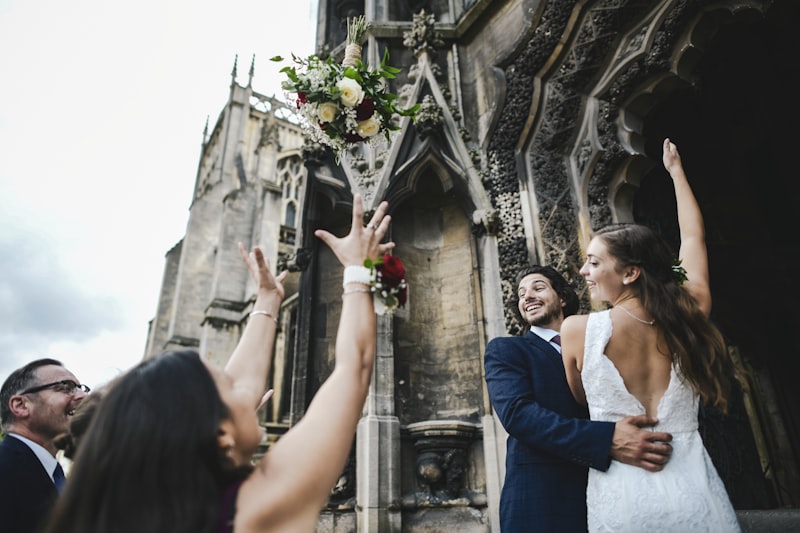Incorporating Cultural Traditions into Your Wedding: A Celebration of Heritage and Love
Incorporating Cultural Traditions into Your Wedding: A Celebration of Heritage and Love
Weddings are one of life’s most significant milestones, representing the union of two individuals, their families, and their respective cultures. In a world becoming increasingly globalized, many couples are opting to incorporate cultural traditions into their weddings to reflect their unique backgrounds and values. This article will explore various ways to incorporate cultural traditions into your wedding, along with tips and suggestions on how to achieve a beautiful, meaningful ceremony that honors both partners' heritages.
The Importance of Cultural Traditions in Weddings
Every culture has its own unique blessings, customs, and rituals that can make a wedding day special. Incorporating these elements can create a stronger bond between partners and their families, fostering respect and understanding. This integration not only pays homage to family heritage but also enriches the overall experience for guests, giving them a glimpse into the couple’s story.
Popular Cultural Traditions to Incorporate
| Cultural Background | Traditions | Examples |
| Chinese | Tea Ceremony | Serving tea to elders |
| Indian | Mehndi Ceremony | Henna body art before the wedding |
| Jewish | Breaking of the Glass | Symbolizing the fragility of relationships |
| Mexican | Lazo Ceremony | Using a lasso to symbolize unity |
Incorporating such traditions into your wedding can create memorable experiences. For example, for a couple with Chinese heritage, a Tea Ceremony could be included to honor family elders by serving them tea. This practice symbolizes respect and gratitude and allows for family bonding moments during the wedding festivities.
 Celebrating Both Partners' Roots
Celebrating Both Partners' Roots
One of the challenges faced by couples from different cultural backgrounds is finding a balance that honors both heritages. Here are some insightful tips for creating a seamless blend of traditions:
1. Open Communication
Discuss your family traditions openly with your partner. Understanding the significance of each custom helps in respectful integration. This discussion can lead to a more meaningful wedding ceremony that encompasses both cultures.
2. Create a Cultural Mix in the Venue
If you want to showcase both backgrounds, consider a themed wedding venue that reflects the essence of both cultures. Think about color schemes, floral arrangements, and decor styles that symbolize each heritage.
3. Food as a Cultural Expression
Food is a universal language, and it’s an excellent way to incorporate cultural traditions. From traditional dishes to fusion cuisine, the menu can reflect both backgrounds significantly. For instance, you might serve Indian butter chicken alongside Italian pasta to highlight both heritages. Personalizing the catering with culturally significant dishes creates a memorable culinary experience for your guests.
4. Ceremony Rituals
Incorporating traditional rituals can be powerful, whether it’s lighting a unity candle or jumping a broom. For example, many African American couples often include jumping the broom as a symbol of their unity and moving forward together. Another couple might choose to have both Christians and Jewish blessings to honor respective faiths during their vows.
Incorporating Cultural Attire
Wedding attire can also reflect cultural heritage. Couples might choose to wear traditional clothing or add cultural elements to modern outfits. For instance, a bride could wear a traditional Kimono or Sari for parts of the ceremony, complemented by a Western-style dress for the reception. Similarly, grooms might incorporate cultural accessories like turbans or specific color schemes that have personal or cultural significance.
Including Family and Friends
When incorporating cultural traditions, it’s important to involve family and friends in different ways during the wedding. Consider assigning special roles to family members, such as giving speeches or participating in traditional ceremonies. This involvement not only honors family but also enriches the experience for guests, who get a more inclusive view of the couple’s backgrounds.
Music and Dance Traditions
Music can set the tone for the celebration, and including traditional songs can enhance the cultural aspect of your wedding. Consider a mix of cultural and contemporary songs that resonate with both backgrounds. Dance is another way to incorporate traditions. You can create a medley that includes traditional dances, allowing guests to participate and learn about different cultural practices in a festive setting.
Designing Invitations and Save-the-Dates
Your wedding invitations and save-the-date cards can subtly reflect your cultural backgrounds. Use design elements, symbols, or colors that are significant to your cultures. For instance, incorporate traditional motifs or scripts that convey messages meaningful in both cultures. This attention to detail shows guests the importance of your cultural integration long before the wedding day arrives.
Celebrating Diversity with Guest Experiences
Creating a unique guest experience that reflects diversity is crucial. Consider activities that showcase both cultures. For example, you might set up a photo booth with props that represent both heritages, or create fun interactive stations for guests to learn cultural dances or crafts. This kind of engagement fosters a deeper appreciation and collective celebration among attendees.
Final Thoughts on Incorporating Cultural Traditions into Your Wedding
Incorporating cultural traditions into your wedding is a vibrant way to honor your heritage while celebrating your love. By blending various elements—attire, food, decor, music, and rituals—you can create a unique ceremony and reception that tells your story. Remember, open communication with your partner about preferences and significance is key to ensuring that both sides feel represented and respected.
As you plan your wedding, consider the traditions that resonate the most with you and carry those throughout your special day. A well-planned integration of cultural elements not only adds depth to your celebration but also fosters connections among families and guests, allowing everyone to share in the joy of your union.
Be mindful of the balance you create and take note of what traditions bring joy and meaning to both families. Ultimately, your wedding should reflect your love story while honoring the rich tapestry of your cultural backgrounds.
